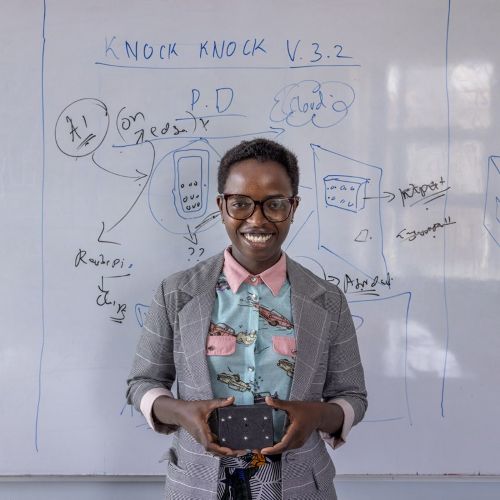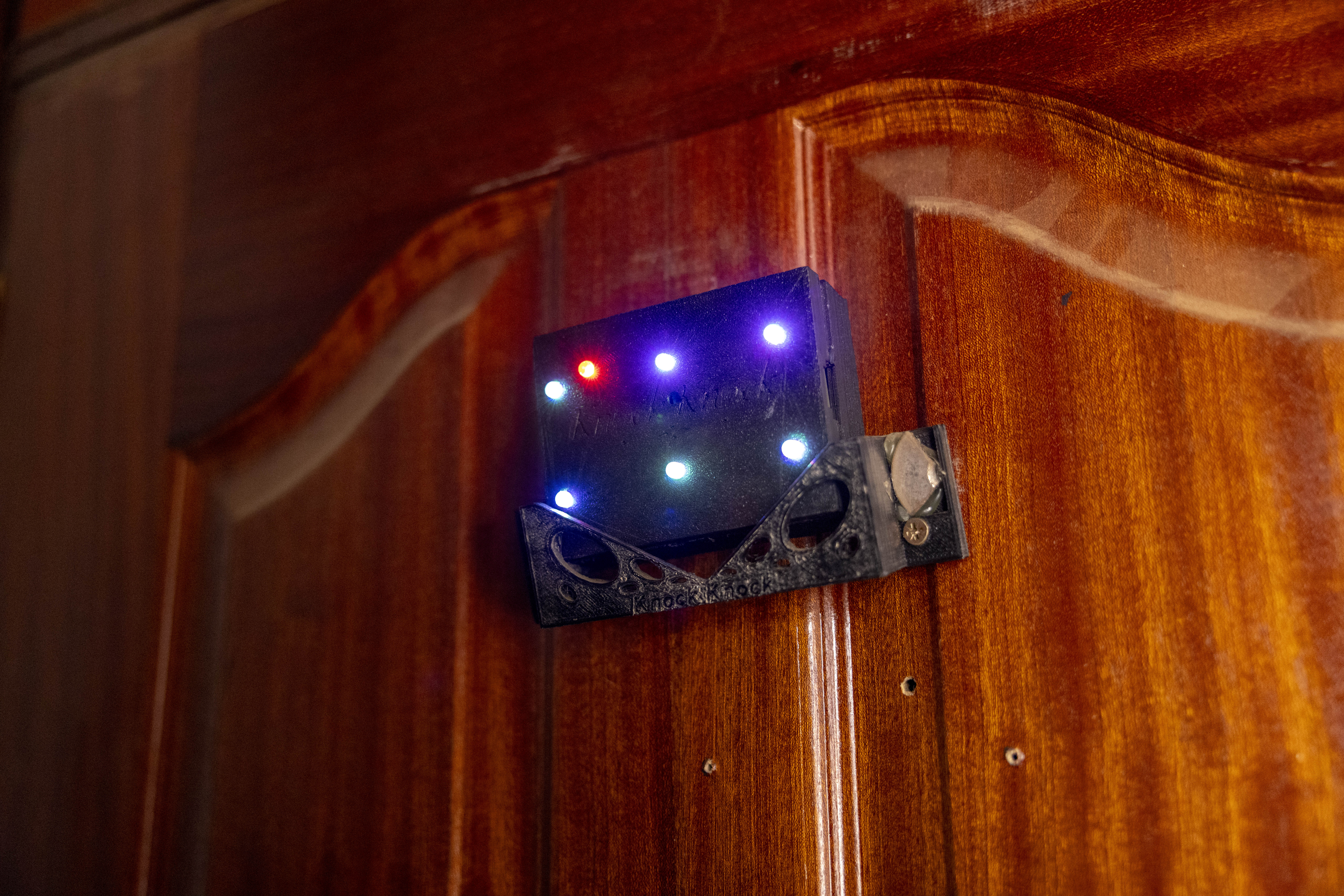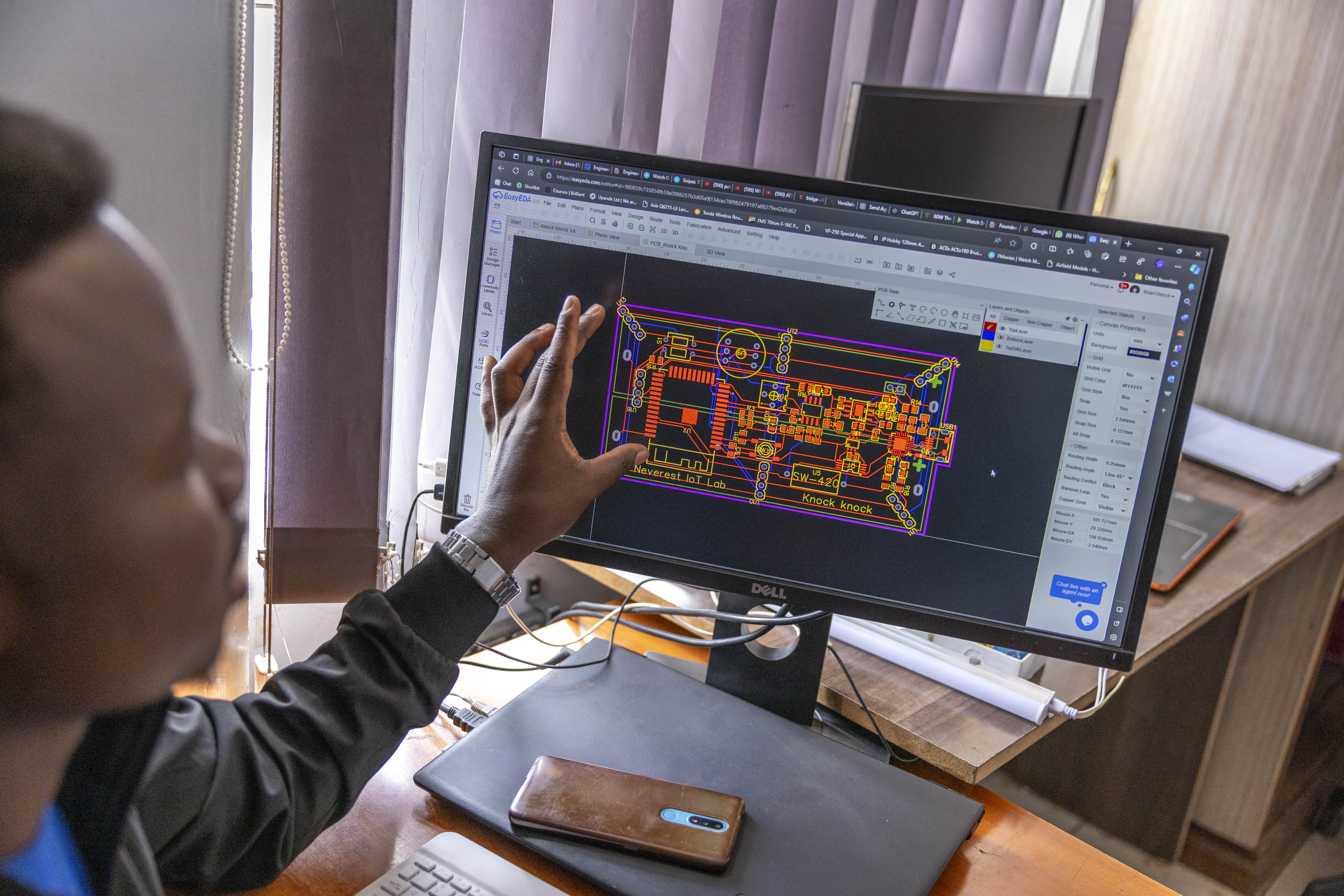Kenyan innovator Esther Mueni created Knock Knock to help people with hearing impairments to perceive and engage with sound. The cube-shaped device, measuring 5 cm by 5 cm, is fitted to a door and triggers two alerts when activated.
The first alert is visual, using a multi-coloured LED lighting system attached to the device to display attention grabbing patterns. An ESP Family Microcontroller, housed in the device, coordinates the sensor data, triggers the LED lights and manages Bluetooth notifications.
The second alert relies on a free mobile application, ‘knock knock’, which is downloaded to the user’s phone. This application triggers the phone to vibrate in unique patterns and sends a notification to the user.
Future models will include customisable LED and vibration patterns, and inter-device communication so alerts can be transmitted in bigger buildings.
Knock Knock uses a rechargeable 5 watt lithium-ion battery that connects to a phone charger. A battery management system allows the knock knock app to alert users when the battery requires charging. It also stores a log of knocks over a 24-hour period. Mueni and her team have manufactured over 20 devices, which are priced at US$120 each.
Education institutions are a target audience for Knock Knock. It was first piloted in hostels at Kenyatta University in Kenya, which then purchased the devices to support its students who are deaf or have hearing impairments.
Mueni is researching how Knock Knock can be developed to detect and transmit other sounds, such as a baby crying and a school bell ringing.

Many people who are deaf or hard of hearing feel disconnected from society. My team and I are working to craft solutions which enable this community to interact with the sound environment, and to create a community of understanding around deaf culture
Esther Mueni




